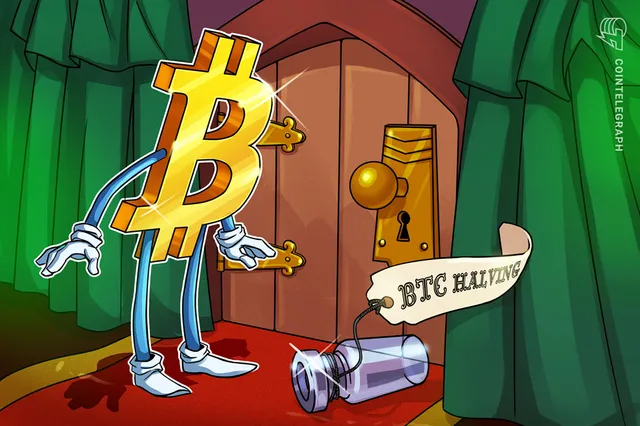Daily Crypto News And Price Analysis, 09th, December

Welcome to the daily crypto news :
Ethereum’s Istanbul Hard Fork Is Now Live;
Microsoft Azure Announces Blockchain Token and Data Management Service;
Decentralized Liquidity Is the Backbone of DeFi;
Death Spirals and BTC — What Happens When Miners Capitulate?;
Bitcoin Halving, Explained;

Ethereum’s Istanbul Hard Fork Is Now Live

Ethereum has successfully completed the Istanbul hard fork.
Hitting at block number 9,069,000, the systemwide upgrade is the network’s third in 2019, following February’s St. Petersburg and Constantinople hard forks. The months-long process culminated at 0:25 UTC on Sunday.
Another iteration of Ethereum 1.x, Istanbul is the network’s eighth hard fork overall with the first code changes being approved in June 2019. (Eth 2, the network’s major transition to proof-of-stake (PoS), is expected in 2021.) Being non-contentious, all ethereum clients – which host and independently upgrade the ethereum protocol themselves – have agreed to the new software.
Istanbul includes six Ethereum Improvement Proposals (EIPs), specific code changes to the ethereum protocol, including EIPs 152, 1108, 1344, 1844, 2028 and 2200.
Read more.......

Microsoft Azure Announces Blockchain Token and Data Management Service

Microsoft’s blockchain-enabled cloud service Microsoft Azure announced new tokenization and blockchain data management services.
In a post published on the official Microsoft Azure blog on Dec. 6, the IT service giant announced the Azure Blockchain Tokens and blockchain data manager.
New tools for Azure blockchain users
The Azure Blockchain Tokens service aims to simplify the definition, creation and management of compliant tokens built to industry standards. The firm also provides pre-built templates for common uses and hosts a gallery for templates created by partners, which are expected to be added in the future. The announcement reads:
“With this latest offering, we can now offer customers an end-to-end experience of easily creating and managing tokens for physical or digital assets via Azure Blockchain Tokens (preview), in addition to managing the blockchain network itself via Azure Blockchain Service.”
Read more.......

Decentralized Liquidity Is the Backbone of DeFi

Matthew Prewitt is a cryptoeconomic advisor at Amentum Capital and co-lead of the RadicalxChange. Steven McKie is the CEO of Amentum Capital. The views expressed are those of the authors.
One of the most interesting recent developments in cryptocurrency is the emergence of decentralized liquidity pools.
Algorithmic-based smart contract liquidity pools such as Ethereum’s Uniswap, or privacy-focused, off-chain decentralized exchanges such as Starkware’s StarkDEX are just two examples of projects leading the charge.
Inbound/outbound liquidity is essential for the creation and growth of financial markets. Price discovery, and the ability to move in and out of trade positions, whether they’re from a big institutional firm, or a small-time trader, remains key if crypto is to reach maturity; where its aggregate daily volume could sustain at levels comparable to the legacy financial system.
Read more.......

Death Spirals and BTC — What Happens When Miners Capitulate?

The stagnation of the cryptocurrency market has put Bitcoin’s (BTC) price at risk of further decline, as it struggles to recover beyond key resistance levels. A descending price increases the probability of the so-called “miner capitulation” occuring, which is said to have triggered the major BTC drop in December 2018.
Late last year, the Bitcoin price fell to around $6,000 following three months of stability in a tight range between $6,000 and $6,500. The subsequent drop to the $3,000s happened within the span of just one month.
Why miner capitulation occurs?
Miner capitulation occurs in the Bitcoin market when mining is no longer profitable. As profitability drops, miners naturally sell their Bitcoin holdings, capitulating as a response to worsening market sentiment. If miners begin to sell off, it creates significant selling pressure in the market. Such pressure creates a difficult environment for major cryptocurrencies like Bitcoin to maintain their momentum.
Read more.......

Bitcoin Halving, Explained

What is Bitcoin halving?
An event that halves the rate at which new Bitcoins are created. It occurs once every four years.
As many know, Bitcoin’s (BTC) supply is finite. Once 21 million coins are generated, the network will stop producing more. That is one of the main reasons Bitcoin is often referred to as “digital gold” — just like with the yellow metal, there is only a limited amount in the world, and someday, all of it will have been extracted.
Right now, there are around 18 million BTC in circulation, which is roughly 85% of the total cap — but it doesn’t mean that the cryptocurrency is about to reach its limit any time soon. The reason is the protocol, which has been coded into the blockchain from the very start: Every 210,000 blocks, it performs the so-called Bitcoin “halving” or “halvening,” and producing new coins becomes more difficult — just like in gold mining where finding new deposits becomes more challenging over time.
More specifically, the protocol cuts the block reward in half. So, every time a Bitcoin halving occurs, miners begin receiving 50% fewer BTC for verifying transactions.
Read more.......

Congratulations @sharetosteem! You have completed the following achievement on the Steem blockchain and have been rewarded with new badge(s) :
You can view your badges on your Steem Board and compare to others on the Steem Ranking
If you no longer want to receive notifications, reply to this comment with the word
STOPTo support your work, I also upvoted your post!
Vote for @Steemitboard as a witness to get one more award and increased upvotes!